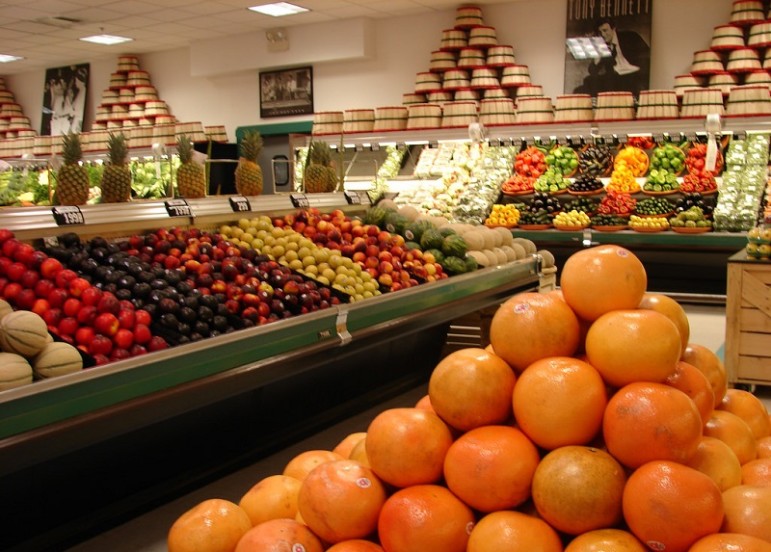
March 26, 2016; Waco Tribune and NPR
In the United States, 2.3 million people live in food deserts—places without access to grocery stores offering fresh fruits and vegetables at reasonable prices. Across the country, grocery stores serving rural and low-income areas are struggling and many are dying. As the large chains leave, residents are banding together to explore new methods of maintaining their neighborhood stores, including membership, connecting to other nonprofit or business services, and crowdfunding.
In Waco, Texas, Mission Waco has raised thirty-eight percent of the funds it needs to convert a vacant 6,500 square-foot building into a vibrant “Jubilee Food Market.” Its goal is to raise $488,000 to transform the eyesore into a community asset. Many years ago, the building was home to a Safeway, but the grocery store has long abandoned the community. Now, the nonprofit is looking to donors from as far away as Maine to rebuild this essential resource.
Jubilee Food Market supporters purchase shares of stock for as little as $25, although larger investment options are welcome. Mission Waco’s project budget consists of 4000 $25 stock shares for remodeling, 10,000 shares to operate the store for the first year, and 5525 shares for the ECSIA Hydroponics Greenhouse. Shareholders receive quarterly reports on the store’s status and the opportunity to participate in the shareholders’ meeting. All donors and residents of the 76707 ZIP code receive an Oasis Club Card entitling them to discounts on store purchases. The store is scheduled to open in September 2016.
Mission Waco chose to open a grocery store after surveying residents and learning the overwhelming majority wanted a supermarket. The organization’s mission is to provide Christian-based holistic programs that empower the community’s low income. The organization also operates a World Cup Café and Fair Trade Market, Jubilee Theatre, and Urban Edibles food trailer.
In Bowdon, North Dakota, residents are also at work. They came together to continue the operation of their grocery store after the store’s owner died and no other owners came forward. The next closest grocery store is eighteen miles away.
Sign up for our free newsletters
Subscribe to NPQ's newsletters to have our top stories delivered directly to your inbox.
By signing up, you agree to our privacy policy and terms of use, and to receive messages from NPQ and our partners.
Run as a membership store similar to Costco and Sam’s Club, the effort is working but the margin is tight. They recently opened a thrift store and bakery nearby to increase business. The tiny town surrounded by fields of soybeans, wheat, and corn lost its community school years ago. Without the grocery store, the town would disappear from the map.
The loss of community grocery stores and its effects on rural America led to six federal agencies creating an $800,000 Obama administration initiative, “Local Foods, Local Places,” to support programs to create community owned grocery stores and farmers’ markets. Twenty-seven communities were selected from over 300 applications. Each community will work with a team of experts to recognize local asset and opportunities, set revitalization goals, and develop an implementation plan using these resources.
Throughout the United States mega-grocery stores are abandoning their rural and low-income urban communities for wealthy city edges and suburbs. Without these businesses, residents lose access to fruits and vegetables and gain more processed fast food outlets and convenience stores full of fat, cholesterol, and sugar. This phenomenon is contributing to the obesity epidemic and leading to an increase in heart disease and other diseases associated with this condition.
Food is Power, a California nonprofit “seeking to create a more just and sustainable world by recognizing the power of one’s food choices,” found that wealthy areas have three times as many supermarkets as poor ones. And the disparity is even more pronounced when comparing racial makeup: White neighborhoods have four times as many grocery stores as African American communities, and the stores in African American communities are smaller with a more limited selection. Overall, according to the Economic Research Service of the US Department of Agriculture, 2.2 percent of all households do not own a car and live more than a mile from a supermarket.
Although creating and running a community-owned grocery store is a challenge, Willow Lake, South Dakota’s Lake Grocery has been a beacon for the community for over five years. Operated by Willow Lake Area Advancement, the store employs a full-time manager and two part-time employees in addition to volunteers. Although the organization described the project as a leap of faith, it has worked out well for the community and the nonprofit.—Gayle Nelson











